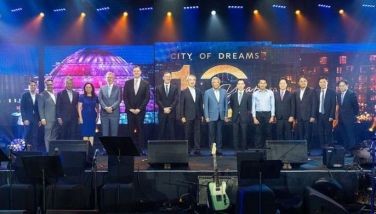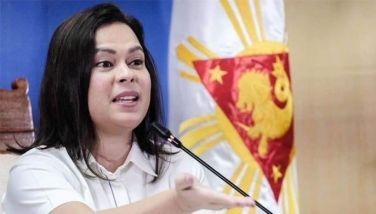Was 6-month Boracay closure worth it? Stakeholders weigh in

BORACAY, Aklan, Philippines — Despite financial losses and other difficulties, most if not all of the stakeholders said the six-month closure of Boracay Island was worth it.
Aklan Gov. Florencio Miraflores said the past six months had been a difficult time since Boracay is the main anchor of the province’s economy.
He said many of his constituents were displaced and businesses suffered, and the adverse impact on all sectors of the province had been significant.
“But today, today is a great day for the people of Boracay and Aklan,” Miraflores declared when the resort island was formally reopened on Friday.
“Sacrifices have been made but everyone believed that it’s all worth it,” he said.
Boracay was known as the crown jewel of Philippine tourism with its world-famous powdery white sand, but unchecked tourism and environmental degradation made it far from the tropical paradise it was decades ago.
Authorities said some of the hundreds of tourism-related hotels and restaurants use the island’s drainage system and leaked untreated sewage into its surrounding turquoise waters.
This prompted President Duterte to order the closure of Boracay in April, describing the island resort as a “cesspool.”
Duterte also issued Proclamation No. 475 placing the island under a state of calamity to enable agencies to carry out rehabilitation works.
The state of calamity covered three barangays of the island, namely Balabag, Manoc-Manoc and Yapak.
State agencies were directed to undertake remedial measures like controlling the prices of goods and commodities for the affected areas and tapping negotiated procurement for relief and rehabilitation of affected areas.
The six-month closure had threatened the livelihood of 17,000 hotel, restaurant and other tourism workers, plus about 11,000 construction workers.
For Fiona Lauren Molina, president of the Compliant Association of Boracay (CAB), the six-month closure brought them confusion and fear.
“We also know that Boracay needed saving from years of neglect and abuse – collective failure form both the public and private sectors. We had been clamoring for national attention to help solve our problems and, I think, all here will agree we got more than we could have possibly imagined,” Molina said.
Asked if the closure of the island resort was worth it, Molina answered in the affirmative.
“Our answer is a firm and resounding ‘yes.” These past six months have made a lifetime of difference,” Molina said.
“Having seen and been a part of the rehabilitation efforts, we have a deeper appreciation of our pristine white sand beaches and turquoise waters and, most importantly, the hard work needed to help keep them this way. Boracay was and will continue to be worth all our sacrifices and hardships,” she added.
For Virgilio Sacdalan, leader of the shops and restaurant owners of Boracay, it was a difficult period and they couldn’t imagine how to rebuild.
“Rebuilding Boracay was a struggle to the stakeholders, residents, workers and their families,” Sacdalan said.
But in the end, it prepared them for a stronger and better Boracay, he added.
Victoria, a Boracay resident, said the six months’ closure was bad news for them.
“But on one hand, we knew that it had to be done,” she said in Filipino.
Victoria used to be a hair braid artist but had to sell barbecue when the island was shut down for rehabilitation.
“Hopefully, we could bounce back after this,” she added.
Optimism was also evident on Dandy Alvarez’s face when asked about his expectation for the Boracay re-opening.
During the closure, 37-year-old Alvarez continue to ply his electric tricycle and would take home P300 per day on the average.
Previously, he earned at lean P700 daily.
“But it was a sacrifice that we had to do because I saw how crowded the island was. I was hoping that my grandchildren could still enjoy Boracay,” he said.
Aljean, a housekeeping attendant of a resort, said she chose to take a three-month leave during the closure.
She earned minimum wage. Her employer did not retrench them but offered a P5,000 salary if they continued to stay at the resort while the island was closed.
She chose to rest for three months and worked for another three months. “It was all worth it.”
From business owners to workers and residents, all are hopeful that the new Boracay would entice tourists to visit the island.
Leonard Tirol, a resort owner and a member of the Boracay Foundation, said the opening of the island was a big success and all tourists cooperated with the government’s guidelines.
Tirol said most of the tourists that arrived were Chinese and Koreans.
The island was reopened last Friday with officials promising to strictly implement measures against littering, the holding of parties and bringing of pets on beaches and the drinking of alcohol and smoking in public areas.
The number of tourists on the island would also be limited to 19,215 on any given day to avoid overcrowding.
On opening day, the Caticlan Jetty Port recorded some 2,440 tourist arrivals with bookings while 114 stayed with their friends and families residing in the island.
Non-residents who went for a one-day transaction numbered 347.
There were 1,419 Boracay residents, 1,535 workers and 1,555 residents who entered the island on the same day.
Tourism Secretary Bernadette Romulo-Puyat said that a total of 2,562 domestic and international tourists arrived during the reopening.
As far as Puyat is concerned, the soft opening of the island last Oct. 16 was great after tourists followed and complied with their guidelines and policies for the island.
“Sentiments of the beach area have been very positive. Both first time and long time tourists are in awe seeing the cleaned-up easement area and how clear the water is,” Puyat said.
“The old timers, this was the Boracay they fell in love with 30 years ago,” she added.
Lessons learned
Everyone should learn lessons from the deterioration and subsequent closure of Boracay, Malacañang said yesterday as it lauded agencies involved in the rehabilitation of the world-famous tourist destination.
Presidential spokesman Salvador Panelo said what happened to Boracay was a “lesson of political will” as shown by President Duterte but was also a “lesson of neglect misfeasance and malfeasance by responsible persons in office.”
“The cesspool that was Boracay would not have happened if political will was exhibited by those in authority and if only officials of the island paradise, as well as the stakeholders, operated following the law and the rules and regulations of pertinent government agencies,” Panelo said in a statement released late Saturday.
“It has to take the strong and decisive leadership of the President to put things in order and we should all learn from these lessons so that Boracay will become an attraction not only in this country but in the world,” he added.
Panelo said Duterte was “pleased” with what has happened in Boracay.
“We commend the different departments for the evolution and development of Boracay, as well as the patience and cooperation of everyone,” Panelo said.
Tourism Secretary Puyat said government agencies have been tasked to sustain the pristine condition of Boracay.
Puyat said there were proposals to implement “resting periods” for Boracay but stressed it is still in discussion with the Departments of Environment and Natural resources, and the Interior and Local Government.
“We have talked about it but we have yet to agree on it and set it in stone, ” Puyat said.
She said they could not yet tell how long the resting or healing period would be.
Officials are eyeing the monsoon season to implement the rest period, since there is low tourist arrival in the island during that time.
Interior Secretary Eduardo Año is reportedly proposing to have an annual month-long resting period of the island to give time for its natural rehabilitation.
Tourism stakeholders in Boracay have yet to express their sentiments about the proposal.
Puyat said she is thankful to the tourists who cooperated with government’s regulations, which include the no littering, no smoking and no drinking on the beach.
She also expressed confidence that the Philippines can emulate the responsible participation of tourists to other destinations and make the country the model of sustainable tourism in Asia.
On the other hand, Sen. Nancy Binay, chair of the Senate committee on tourism, said visitors to Boracay should not expect much as the resort island is still under rehabilitation.
“The people visiting Boracay should lower their expectations. The rehabilitation is not yet complete,” she said. – With Alexis Romero, Robertzon Ramirez, Marvin Sy
Related video:
- Latest
- Trending




























